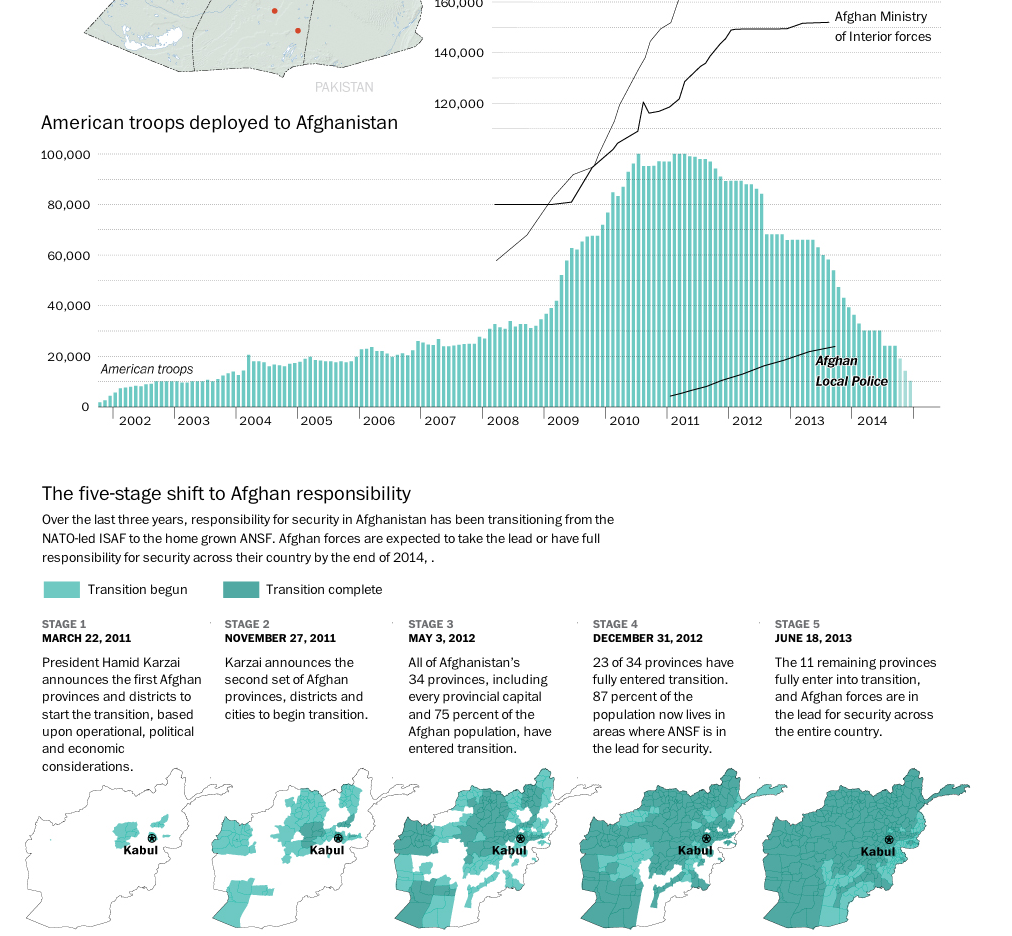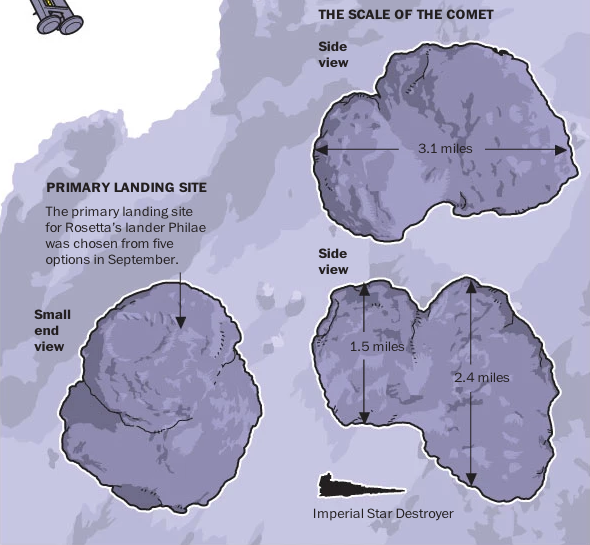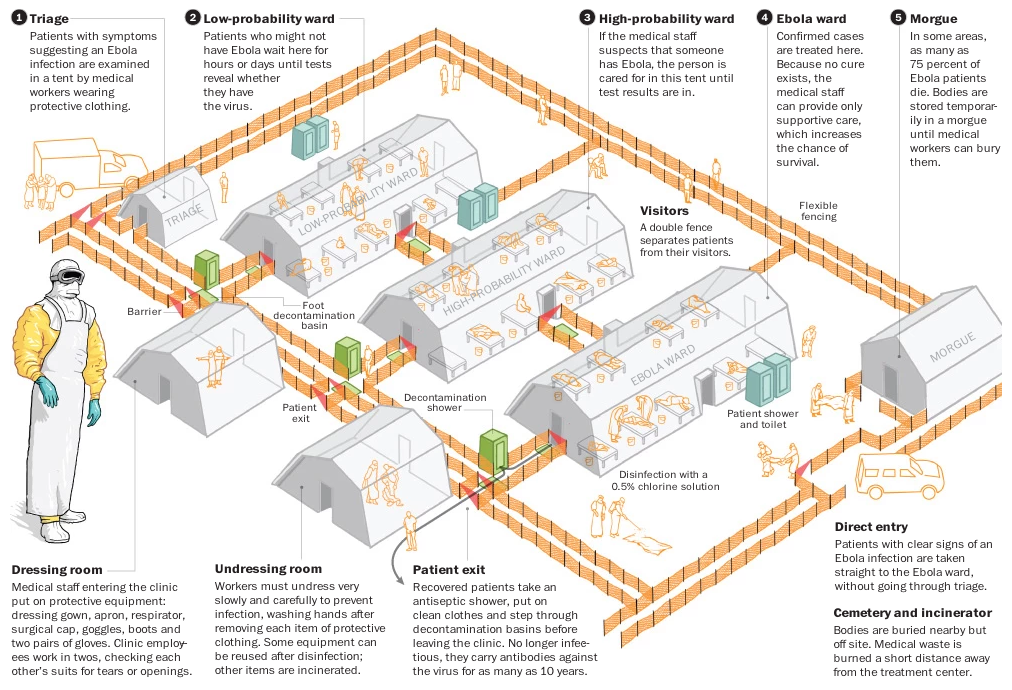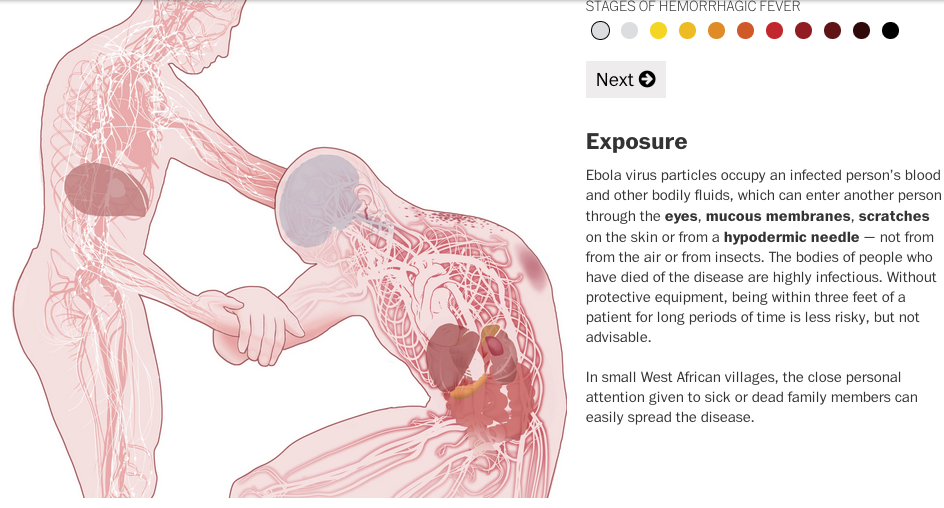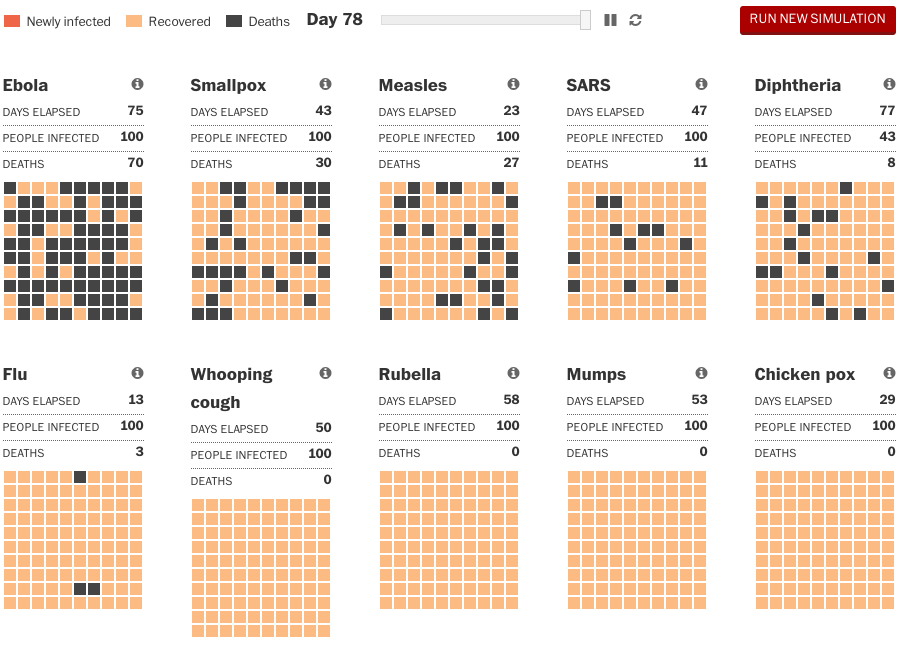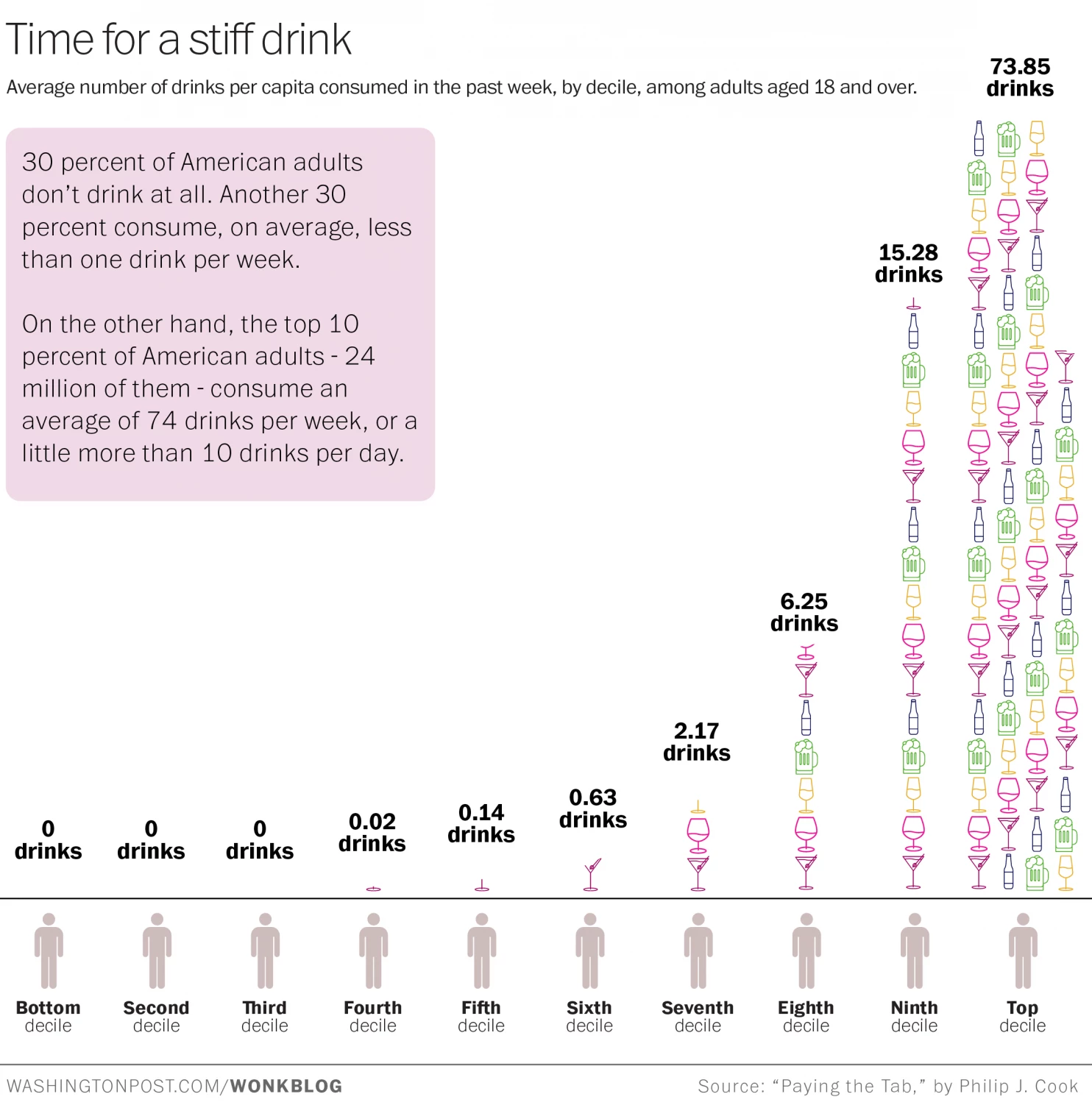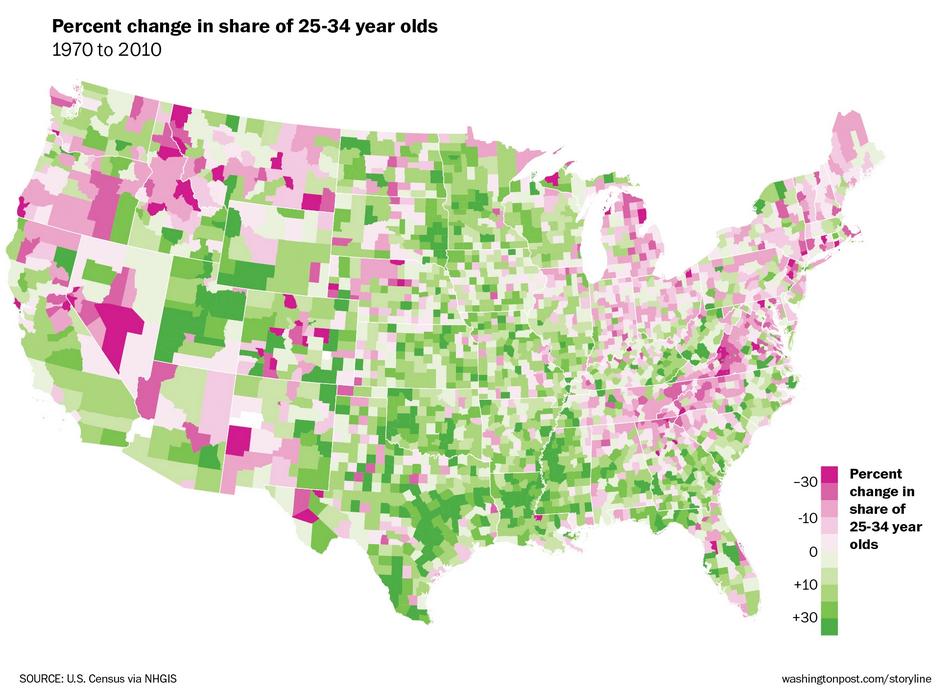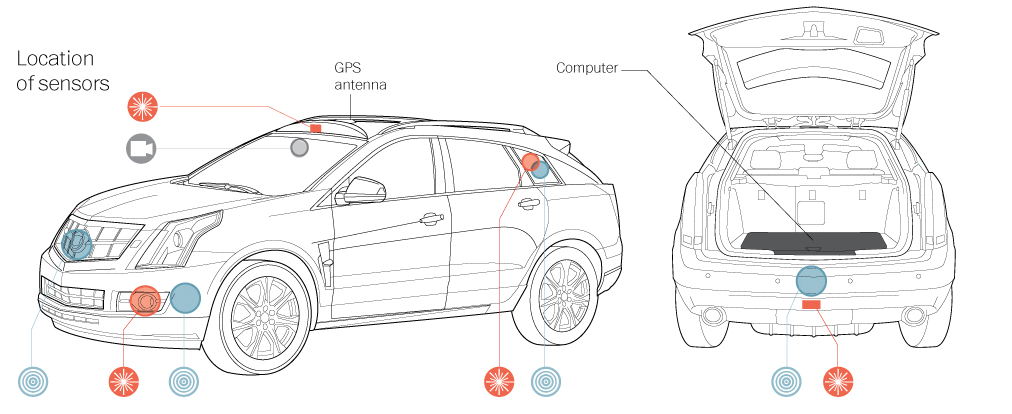As the title says, we are all going to die one of these days. But what are the odds that Ebola will kill you? Turns out it is fairly small. Smaller than your pyjamas catching on fire and killing you. Or even your regular clothes catching fire. How did I know that? Well, the Washington Post put together a nice interactive piece to do just that. It starts you out at Ebola and works up to the most likely causes of death. If you are looking for your morning pick-me-up, this might not be it. Fair warning.
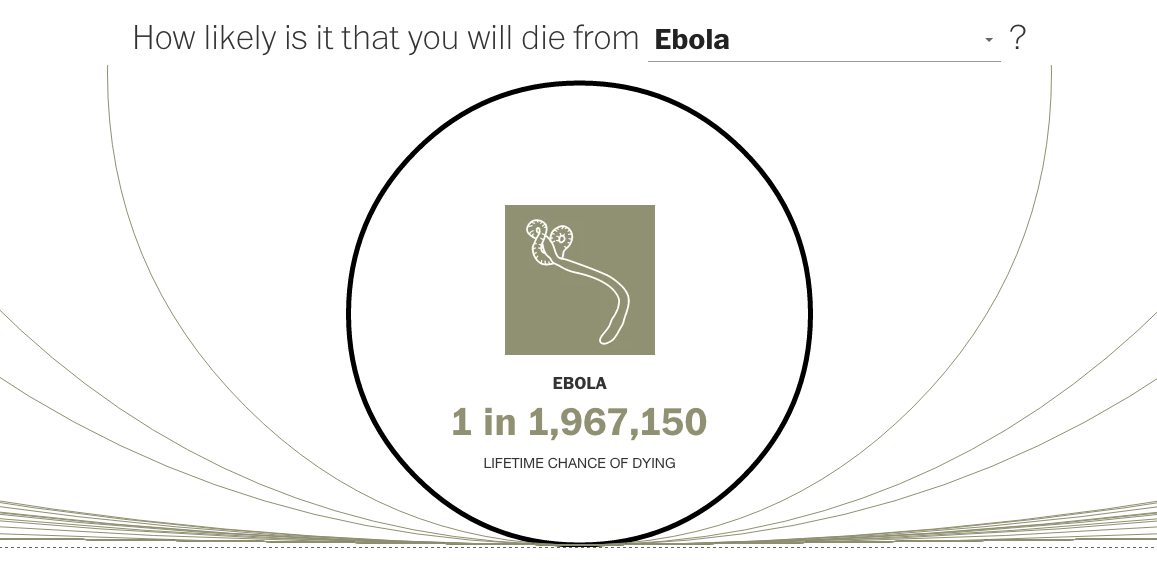
Credit for the piece goes to Richard Johnson and Lazaro Gamio.

